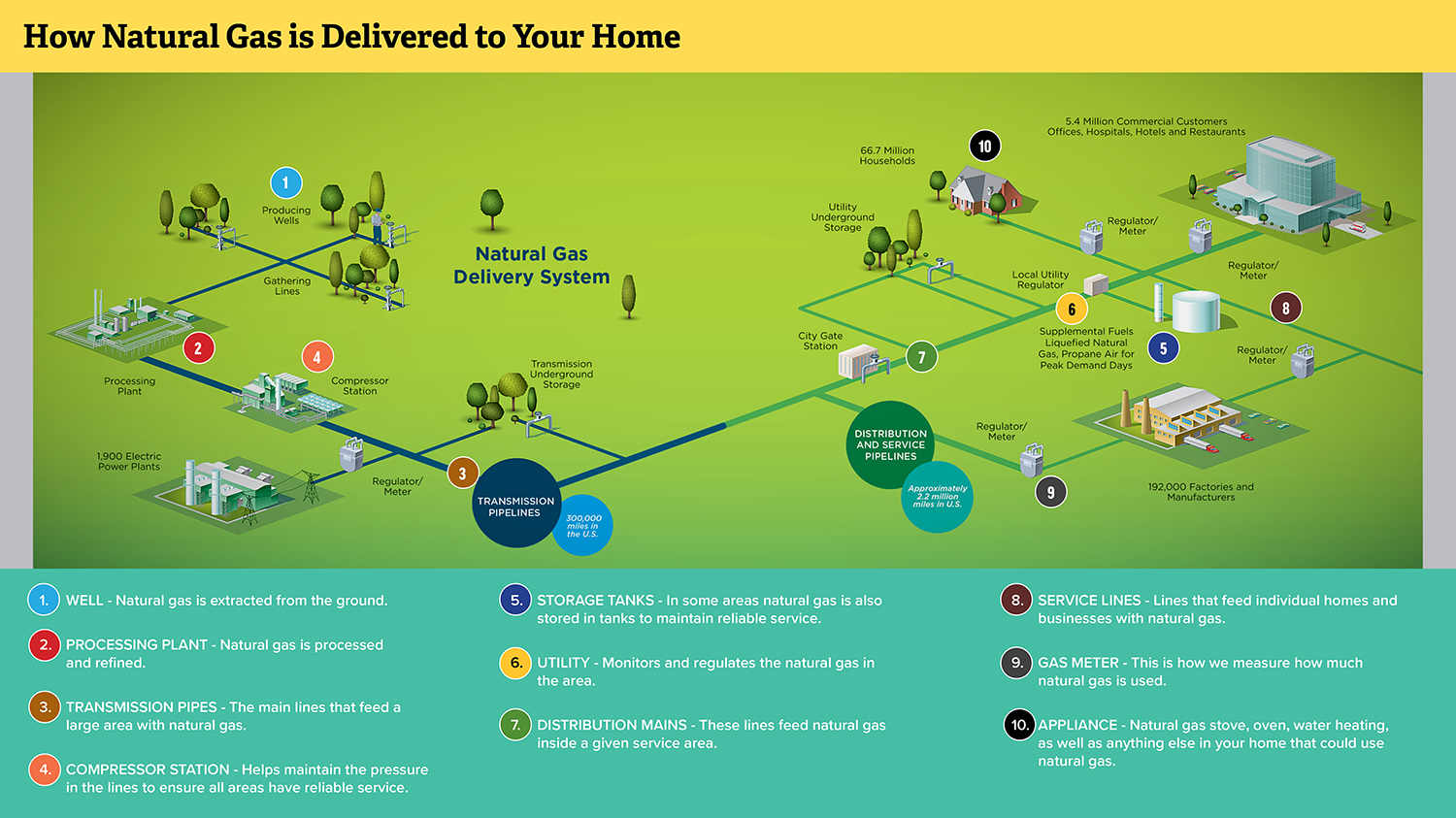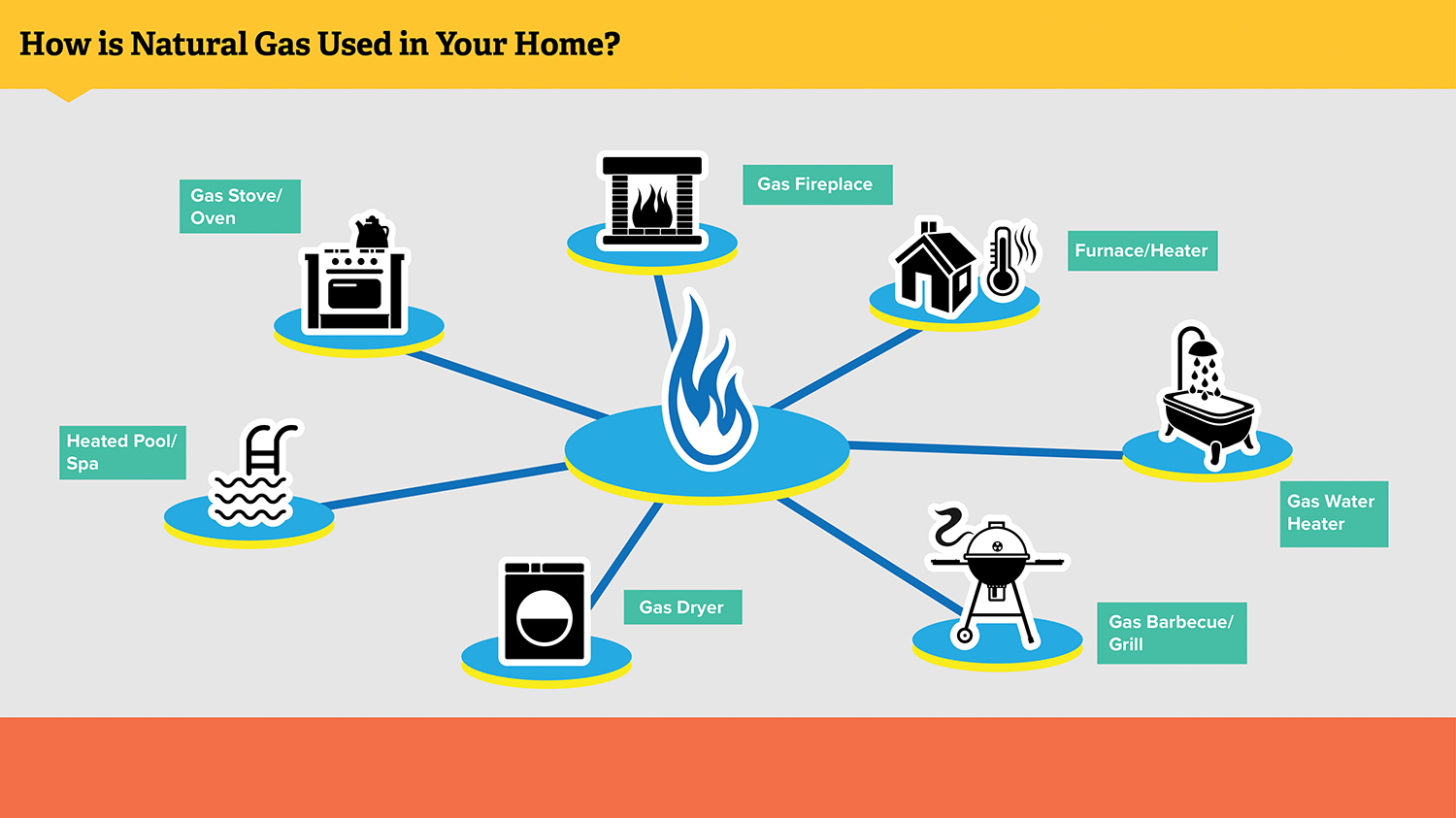Natural gas is made up mainly of a chemical called methane.
Methane is a simple, compound that has a carbon atom surrounded by four hydrogen atoms.
Methane is a natural substance that can be produced over time through biological routes, through technological processes, or other synthetic means. If produced underground, it can last for more than 1,000 years.
Methane is highly flammable which makes natural gas burn almost completely with no ash and very little air pollution.
*2021 American Gas Association
Did You Know?

Carbon emissions generated by the average natural gas home decline by 1.2% each year.
Because natural gas utilities like Southwest Gas continue to invest in our nation's gas distribution system, it becomes more energy-efficient. Beyond that, homeowners are doing more with less gas. Although the total number of gas customers in the United States has grown 86% in the past 40 years, demand for natural gas has remained the same, meaning the infrastructure is becoming more efficient.*
Want to know how natural gas is made?
Most of the natural gas we use today began as microscopic plants and organisms that lived in shallow ocean environments millions of years ago.
Plants would absorb the sun and organisms that consume the plants stored them as carbon molecules in their bodies. Over time the remaining organic matter sunk to the bottom of the ocean and became covered with layer upon layer of sediment.
As organic material was buried deeper and deeper, the pressure and heat of the planet combined to help create natural gas.
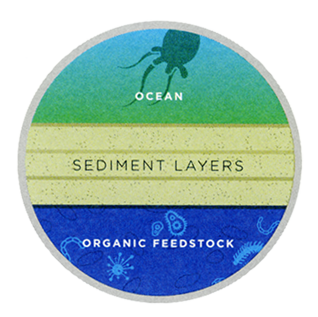
Tiny plants and animals died and were buried on the ocean floor. Over time, they were covered by layers and layers of silt and sand.
What Else is There to Know About Natural Gas
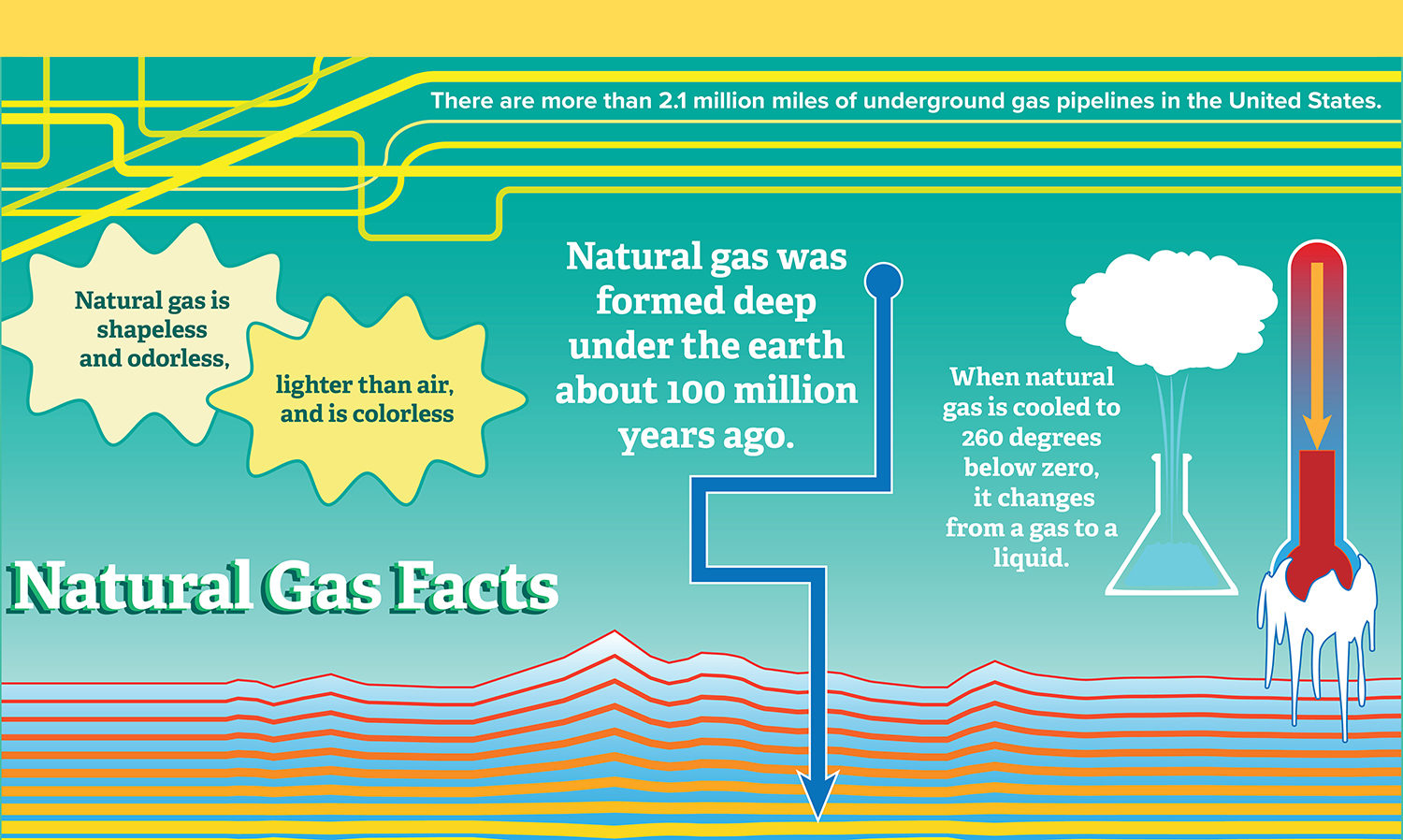
- There are more than 2.1 million miles of underground gas pipelines in the United States.
- Natural gas is odorless and is lighter than air.
- Natural gas was formed deep under the earth about 100 million years ago.
- When natural gas is cooled to 260 degrees below zero, it changes from a gas to a liquid.
Key
- Well – Natural gas is extracted from the ground.
- Processing Plant – Natural gas is processed and refined.
- Transmission Pipes – The main lines that feed a large area with natural gas.
- Compressor Station – Helps maintain the pressure in the lines to ensure all areas have reliable service.
- Storage Tanks – In some areas, natural gas is also stored in tanks to maintain reliable service.
- Utility – Monitors and regulates the natural gas in the area.
- Distribution Mains – These lines feed natural gas inside a given service area.
- Service Lines – Lines that feed individual homes and businesses with natural gas.
- Gas Meter – This is how we measure how much natural gas is used
- Appliance – Natural gas stove, oven, water heating as well as anything else in your home that could use natural gas
Do you ever wonder what uses the most natural gas in your home? On average, space heating accounts for 52.7% of natural gas consumed in Western U.S. homes; the remaining 47% is used for water heating, cooking, and miscellaneous uses.
Natural gas can help you save energy and the environment but you can also do your part to conserve our natural resources and also save money on your monthly bills.
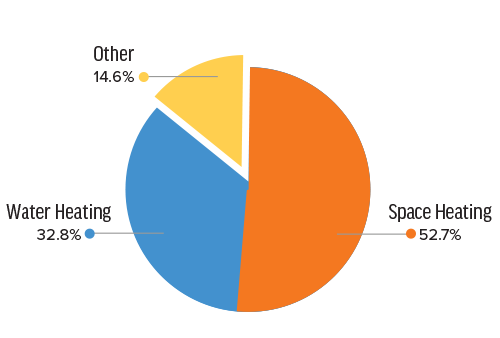
Source: U.S Department of Energy, Energy Information Administration. Residential Energy Consumption Survey (2009).
Energy Calculators

What is a "carbon footprint"? It’s a term used for the carbon emissions produced by everyday activities. Find your carbon footprint by using these energy calculators, and make more informed choices for your home or business.
Natural Gas 3X More Efficient
The carbon footprint of a natural gas home is much smaller than a similar home using electricity for heating and water heating. Visit
Home Energy Saver™ (HES)
to learn how reduce energy use in your homes.
ENERGY STAR® Homes

Your home is your castle, your haven, your place like no other. So why not invest in energy-efficient measures to get more value on your investment and lower energy bills in the long run? Make your home a star. An ENERGY STAR®.
Tools For Kids
AGA created this video to help educate youth about the importance of natural gas safety in the home. The animated video, aimed at elementary and middle school aged children.
Safety Information For Kids

The Energy Safe Kids site is designed to help educate students, their parents and teachers about the properties and benefits of natural gas while encouraging safe behaviors in homes and around the pipelines that deliver it to communities.
Visit Energy Safe Kids
Activity Sheet For Kids

Learning about natural gas is fun. Download the English and Spanish activity sheet (grades K-3) filled with games and puzzles for your little ones.








